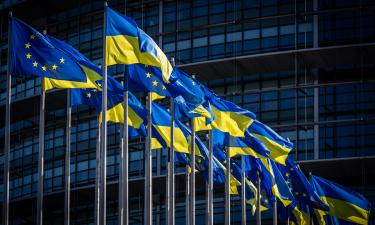Smallpox made facepowder extremely popular in 18th century
On October 12 of 1768, that is, 243 years ago, Dr. Dimsdale vaccinated Catherine II against smallpox. A risky vaccination was done following the death from smallpox of the 15 year-old Emperor Peter II.
Smallpox is a terrible disease that has spared neither prince nor beggars, nor philosophers, nor the common people. At one time, small-pox affected Queen Mary II, Holy Roman Emperor Joseph I, Spanish King Luis I, young Russian Emperor Peter II, and the French King Louis XV. Mirabeau, Nicolas Gnedich and Wolfgang Mozart have ugly scars on their faces. A distinctive feature of all the portraits of the 18th century is an abundance of powder on the famous persons. It was not just a fad, but a vital necessity.
Traces of smallpox peeped at the faces of many famous personages. Among ordinary mortals, people were dying by the thousands. This state of affairs could not please the Russian Empress Catherine the Great. Seeing as the faces of the western aristocracy were getting disfiguring by small pox, she did not want such a fate neither for herself nor for her son. Since her early years she had been living in fear of smallpox: "Since my childhood I have been accustomed to the horror of smallpox. At a more mature age it cost me much effort to reduce this horror, when in every trifle I saw painful smallpox," Catherine wrote to the Prussian king Frederick II.
In the 18th century, Turkey has turned to the ancient Chinese way of preventing smallpox - variolation. After a smallpox epidemic in 1717 in Istanbul was fenced off by variolation, England started using it as well. Successful result of the so-called "king" experiment contributed to the success of variolation. First vaccination against smallpox was tested on criminals sentenced to death, and then - an orphanage for children. In 1721-1722 smallpox vaccine was given to the children of the king and other members of the royal family. At that time the Grand Duchess Catherine knew about it.
At the beginning of her reign in 1763, Catherine established a medical college headed by Baron Cherkasov. He was the one to raise the need for smallpox vaccination to the population of the empire. Indeed, despite the stringent safety precautions used to protect the royal family (smallpox patients were not allowed to court and those infected with smallpox could be taken away their estates), smallpox still seeped into palaces.
An example of a terrible elusiveness of smallpox infection was the death of Emperor Peter II. In 1768, a terrible event occurred in the court of Catherine. Smallpox, in spite of all prohibitions, was able to get to the court. Countess Sheremetyeva, the fiancée of Panin who was the mentor of the Grand Duke, became ill and died soon after. The life of Tsarevich Paul Petrovich was in danger.
Catherine the Great, seeing that the situation becomes dangerous, was forced to take a risk. Having developed an ambitious plan, a ritual of smallpox vaccination, she first decided to vaccinate herself, then pass the "small-pox matter" for vaccination to her son and heir, and from him to all the servants. Under the ancient belief that by giving the "small-pox matter" to others the individual was in mortal danger, the Empress presented herself as a doting mother, sacrificing her life for her son's health. This symbolism was understood and accepted by others.
In the evening of October 12, 1768 an English physician Dimsdale with a child who was a smallpox patient and his assistant were secretly held in the chambers of the Empress. There she was vaccinated against smallpox. The next day, Catherine moved to Tsarskoye Selo palace together with her retinue and indulged in her usual pursuits. It is easy to imagine the horror of the servants accompanying her on walks: they were forced to casual conversations at the dinner table and playing cards in the evenings with the Empress infected with smallpox. Six days have passed. Finally, Katherine showed signs of smallpox, and retired to her rooms until she was cured.
Unfortunately Tsarevich Pavel fell ill with chickenpox at precisely the time when he was about to be vaccinated with smallpox from the Empress, but it did not violate her intent to instill smallpox all over the court. There was no lack of those willing to get a vaccine as Catherine's court considered it a great mercy to receive the "small-pox matter." It was generously handed out as were titles, titles, awards, estates and villages. Only in St. Petersburg nearly 140 aristocrats were vaccinated. On November 10, Tsarevich Pavel Petrovich got vaccinated. When. Catherine the Great was congratulated on the success of the vaccine, she replied that her goal was to save from death as many of her loyal people as possible and that she fulfilled her obligations. November 21 was declared a public holiday and the annual observance by the Russian Empire of a day of victory over the fear of smallpox.
Alexander Orlov
Medpulse
Subscribe to Pravda.Ru Telegram channel, Facebook, RSS!




